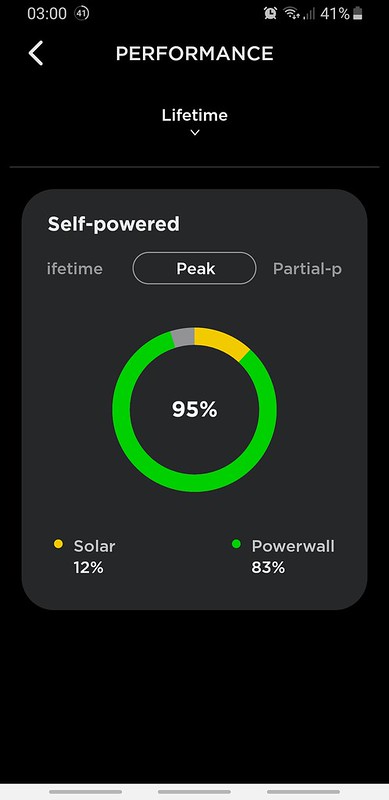I have 4kW solar PV, with panels on both sides of the roof so peak power is generally a little over 2kW but I get a decent amount of exposure (time-wise). On a typical winter day I might get 1 or 2 kWh, in summer it's often in excess of 20 kWh. Got it installed just before the FIT prices dropped from ~12p/kWh.
Switched to Bulb back in spring last year and am on Economy 7 with a day rate that is twice the price of the night rate.
Recently had a Zappi and Eddi installed. Previously had a Solar iBoost which was happily dumping about 6 kWh daily into the immersion water heater (which is an old tank with very little insulation so that's something I'm looking to upgrade at some point so I'll probably be using less energy to heat it.)
Based on the Myenergi app readings, most of my usage is generally below 500w at all times except for the evening peak when food is cooking, using the washing machine, and of course when charging the car or powering the storage heaters (both of which happen on off-peak rate overnight.)
So far I've always been trying to time things like using the washing machine based on how sunny it is, which can be a bit of a gamble as sometimes it's bright for a bit and then it clouds over.
The Zappi should theoretically be able to boost the energy supplied to my car but there's an issue where the car doesn't wake up when charge is available from a Zappi in Eco+ mode, which is a little annoying.
Occasionally, I've read/heard about the Powerwall. We rarely have power cuts but it'd be nice to not have to worry about that. Being able to store the generated power and use it when it's clouded over or in the evening seems like it'd be making the most of my solar PV. And in winter, importing off-peak energy for use during peak times would save a bit of money.
But of course, it's expensive to buy in the first place. It would probably pay for itself eventually, but only after several years (i.e. probably after the warranty expires!) Part of me just wants it for the tech.
I've seen a handful of posts about it here but I'm wondering:
1. If you have one, what were your reasons for choosing it and how useful have you found it?
2. How long does it take to get one? (I'm hoping it doesn't take as long as a Model 3!)
Switched to Bulb back in spring last year and am on Economy 7 with a day rate that is twice the price of the night rate.
Recently had a Zappi and Eddi installed. Previously had a Solar iBoost which was happily dumping about 6 kWh daily into the immersion water heater (which is an old tank with very little insulation so that's something I'm looking to upgrade at some point so I'll probably be using less energy to heat it.)
Based on the Myenergi app readings, most of my usage is generally below 500w at all times except for the evening peak when food is cooking, using the washing machine, and of course when charging the car or powering the storage heaters (both of which happen on off-peak rate overnight.)
So far I've always been trying to time things like using the washing machine based on how sunny it is, which can be a bit of a gamble as sometimes it's bright for a bit and then it clouds over.
The Zappi should theoretically be able to boost the energy supplied to my car but there's an issue where the car doesn't wake up when charge is available from a Zappi in Eco+ mode, which is a little annoying.
Occasionally, I've read/heard about the Powerwall. We rarely have power cuts but it'd be nice to not have to worry about that. Being able to store the generated power and use it when it's clouded over or in the evening seems like it'd be making the most of my solar PV. And in winter, importing off-peak energy for use during peak times would save a bit of money.
But of course, it's expensive to buy in the first place. It would probably pay for itself eventually, but only after several years (i.e. probably after the warranty expires!) Part of me just wants it for the tech.
I've seen a handful of posts about it here but I'm wondering:
1. If you have one, what were your reasons for choosing it and how useful have you found it?
2. How long does it take to get one? (I'm hoping it doesn't take as long as a Model 3!)




